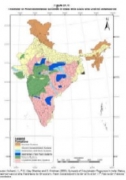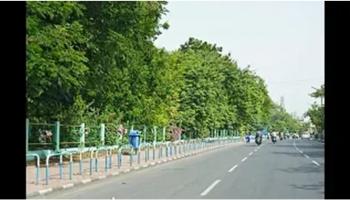/topics/water-management
Water Management
National Water Academy training programmes now open to Indian citizens
Posted on 04 Oct, 2010 03:13 PM

National Water Academy (NWA) is a training institution of the Ministry of Water Resources, Government of India. NWA conducts training programs that cover all aspects of water resources development and management at basin scale, viz. hydrology, hydrometry and telemetry; flood management; investigation, planning and formulation of river valley projects; environmental and social aspects of river valley projects; design of dams /barrages /canals /gates/ hydro-power structures and FEM; dam safety and instrumentation; GIS and Remote Sensing; Hydro-informatics; IWRM; Water Policy; etc.
Surveying, Mapping, Geographical Information Systems and Global Positioning Systems - A Civil Engineering Course under the National Programme on Technology Enhanced Learning
Posted on 02 Oct, 2010 08:37 PMThis Civil Engineering Course under the National Programme on Technology Enhanced Learning (NPTEL) on the broad subject of Surveying, Mapping, Geographical Information Systems and Global Positioning Systems is being carried out by Indian Institute of Technology’s and the Indian Institute of Science, Bangalore as a collaborative project supported by the Ministry of Human Resource Development (Government of India) to enhance the quality of engineering education in the country, by developing curriculum based video and web courses. In these web based lectures, the authors have developed the subject in detail and in stages in a student-friendly manner. The broad group of Surveying, Mapping, Geographical Information Systems and Global Positioning Systems is structured into modules on the following topics:
Analysis of the UN General Assembly's Resolution on Right to Water and Sanitation
Posted on 30 Sep, 2010 06:47 PMThe historic UN General Assembly Resolution declaring Water and Sanitation as a Right, was passed on the 28th July 2010.
What is surprising is the complete silence to this UN Resolution from some of the countries who have been traditional champions of human rights, in terms of celebrating it as a historic achievement in advocating a basic right to water and sanitation. Instead some of them went one step short of openly opposing and vetoing the UN Resolution and have heaped criticism on Bolivia for tabling this UN Resolution.
Protect the right to life considering the dignity of women who do not have access to a toilet
Posted on 30 Sep, 2010 10:26 AMSanitation - a big problem in India, as half the population of our country do not have access to this facility. Mumbai is one of the biggest cities in the world and advanced in terms of its commercialization. However, sanitation is one of the most common issues neglected. Our team of women from Jan Jagruti went into the lanes of 3 areas Azad Mohala, Bharatiya Kamla Nagar, Vijay Nagar and spoke to women to understand the severity of the sanitation issue prevailing. These areas have severe problems with public health, due to improper sanitation infrastructure and insufficiency of toilet facilities, compounded by numerous issues of flooding during the monsoon season. Khaaddi, a local area/dumping ground, is widely used by local residents for urination and defecation, leading to the spread of contagious diseases. Though women use paid toilets, the issue of cleanliness and waiting in long queues are the most common problem before them. It is very insecure for them when they use open spaces for defecation.
Water Resources Engineering and Management - A Civil Engineering Course under the National Programme on Technology Enhanced Learning
Posted on 29 Sep, 2010 07:42 AMThis Civil Engineering Course under the National Programme on Technology Enhanced Learning (NPTEL) on the broad subject of Water Resources Engineering and Management is being carried out by Indian Institute of Technology’s and the Indian Institute of Science, Bangalore as a collaborative project supported by the Ministry of Human Resource Development (Government of India) to enhance the quality of engineering education in the country, by developing curriculum based video and web courses. In these web based lectures, the authors have developed the subject in detail and in stages in a student-friendly manner. The broad group of Water Resources Engineering is structured into modules on the topic by IIT Kharagpur as follows:
4th South Asian Conference on Sanitation (SACOSAN IV) in Srilanka
Posted on 28 Sep, 2010 12:27 PM
The South Asian Conference on Sanitation (SACOSAN), a government led biennial convention held on a rotational basis in each country, is a platform for dialogue and influence created by the governments of South Asian Countries to review the progress made in the area of Sanitation. The SACOSAN process would help to generate political will to narrow the gap in Sanitation access and usage.
Water security vs national security published in Third Concept September 2010 : Countries that share a river face a higher probability of engaging in military disputes
Posted on 28 Sep, 2010 10:15 AMThere has been growing public and policy preoccupation in recent years with potential climate impacts on water security in the wake of the worsening risk of global warming. In 1991, then–UN secretary general Boutros Boutros-Ghali pronounced that “the next war will be fought over water, not politics.” In 2001, Kofi Annan warned that “fierce competition for fresh water may well become a source of conflict and wars in the future.” And present UN secretary general Ban Ki-Moon has argued that the ongoing Darfur crisis grew at least in part from desertification, ecological degradation, and a scarcity of resources, foremost among them water. Apart from this chorus of concern, many policy scholars have asserted that, as population growth and economic development raise pressures on demand and environmental pressures degrade supplies, resource scarcities could precipitate violent international conflicts, with shared rivers an especially dangerous flashpoint.
Fluid Mechanics, Hydraulics, Hydrology and Flow - A Civil Engineering Course under the National Programme on Technology Enhanced Learning
Posted on 28 Sep, 2010 08:04 AMThis Civil Engineering Course under the National Programme on Technology Enhanced Learning (NPTEL) on the broad subject of Fluid Mechanics, Hydraulics, Hydrology and Flow is being carried out by the Indian Institute of Technology’s and Indian Institute of Science, Bangalore as a collaborative project supported by the Ministry of Human Resource Development (Government of India) to enhance the quality of engineering education in the country, by developing curriculum based video and web courses. In these web based lectures, the authors have developed the subject in detail and in stages in a student-friendly manner. The broad group of Fluid Mechanics, Hydraulics, Hydrology and Flow is structured into modules on the following topics:
Water law and policy in India - Capacity building workshop for women in Chitrakoot, Uttar Pradesh
Posted on 27 Sep, 2010 03:30 PMWater law and policy framework in India has undergone significant changes in the last couple decades. Given the complex nature of the law and policy framework, the awareness among common people is minimal or nil. This is an irony given the fact that recent law and policy changes call for ‘users’ to be as a key player in the management and development of water.
Water resources - Mid-term appraisal of the eleventh five year plan - Report by the Planning Commission
Posted on 25 Sep, 2010 04:57 PM The Eleventh Plan (2007-08 to 2011-12) sought to build on the gains achieved in the Tenth Plan and shift the economy to a path of faster and more inclusive growth. The Mid Term Appraisal (MTA) report for the Eleventh Five Year Plan 2007-2012 by the Planning Commission reviews the experience in the first three years of the Plan and seeks to identify areas where corrective steps may be needed.
The Eleventh Plan (2007-08 to 2011-12) sought to build on the gains achieved in the Tenth Plan and shift the economy to a path of faster and more inclusive growth. The Mid Term Appraisal (MTA) report for the Eleventh Five Year Plan 2007-2012 by the Planning Commission reviews the experience in the first three years of the Plan and seeks to identify areas where corrective steps may be needed.
The Eleventh Plan recognises the special challenges of water resources management facing India and the likelihood that these will grow over time due to the rising population and industrialisation.
This chapter discusses the major features of the water problem facing the country followed by a review of the performance of the schemes dealing with water in the Eleventh Plan. The chapter also proposes an alternative approach to be elaborated into an operational strategy to be implemented in the Twelfth Five Year Plan.







